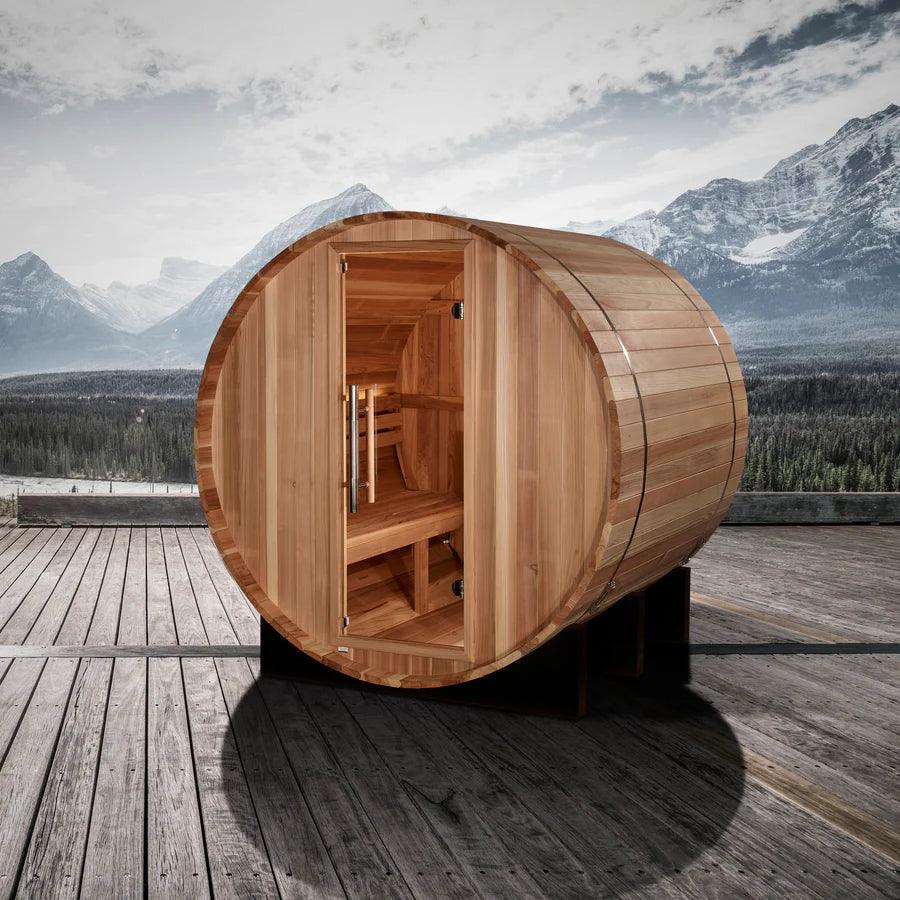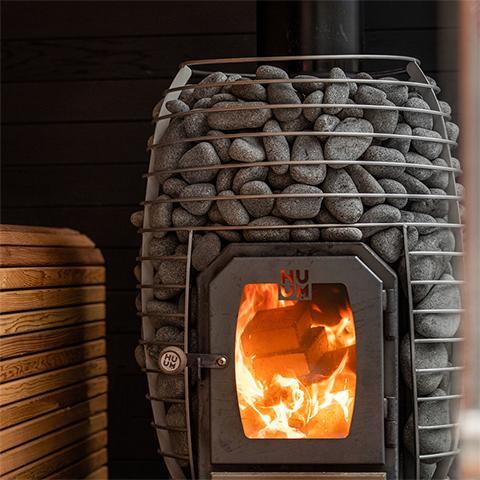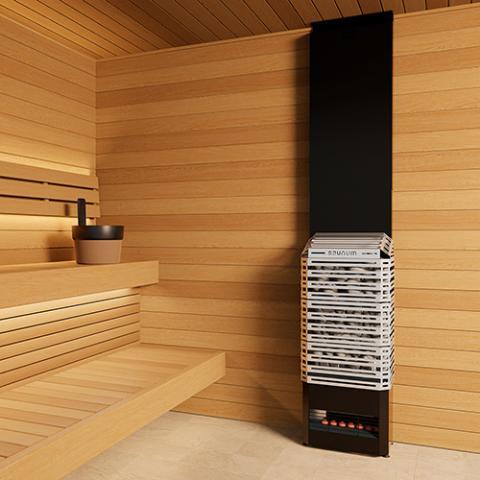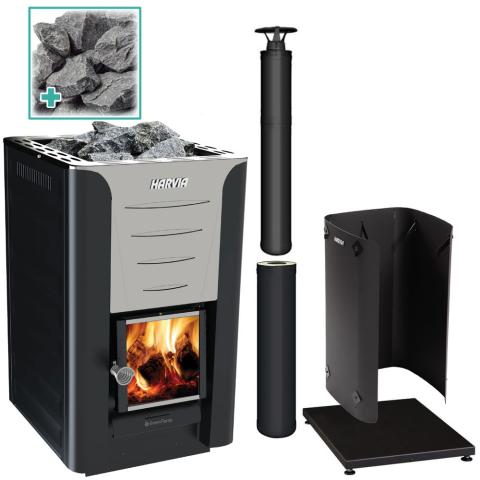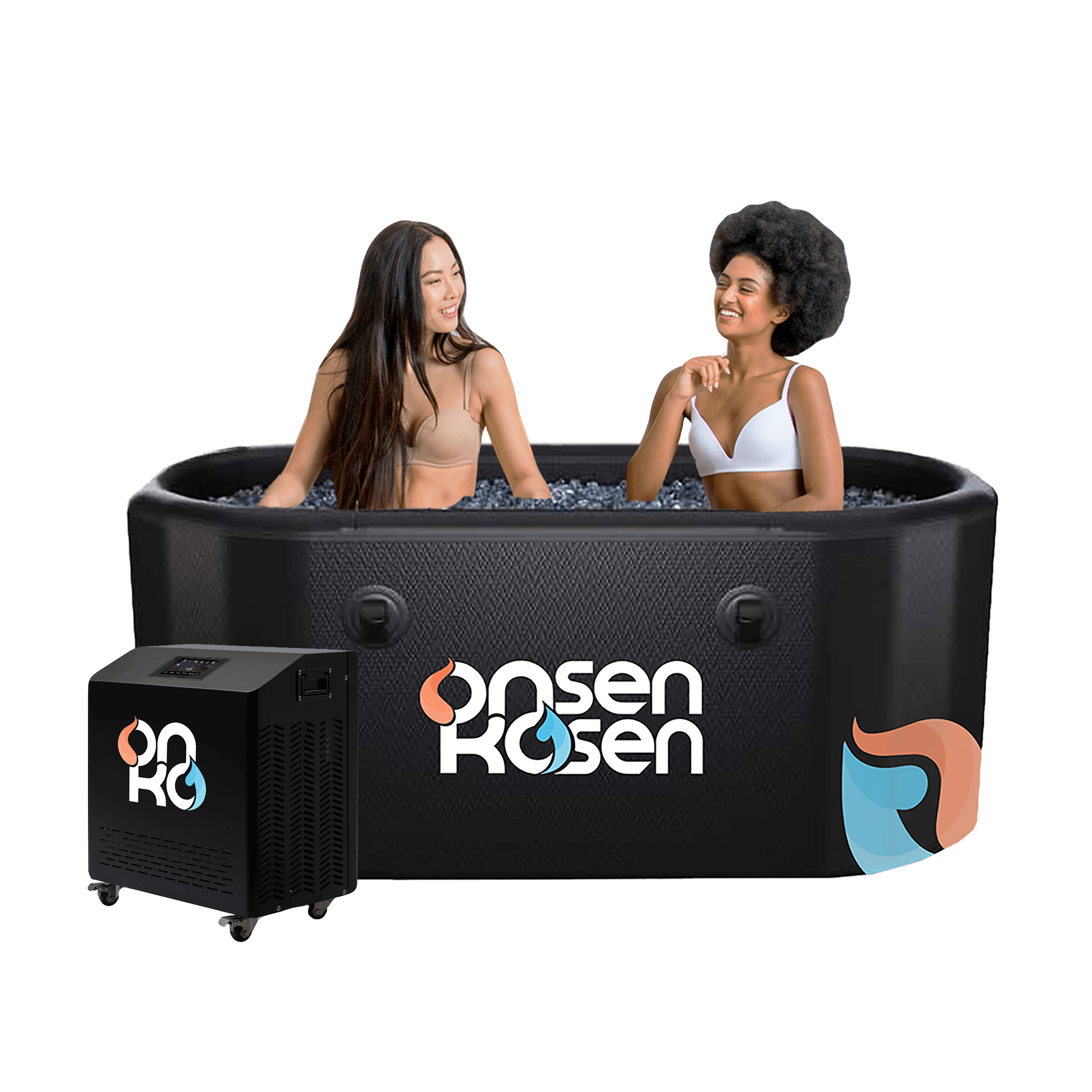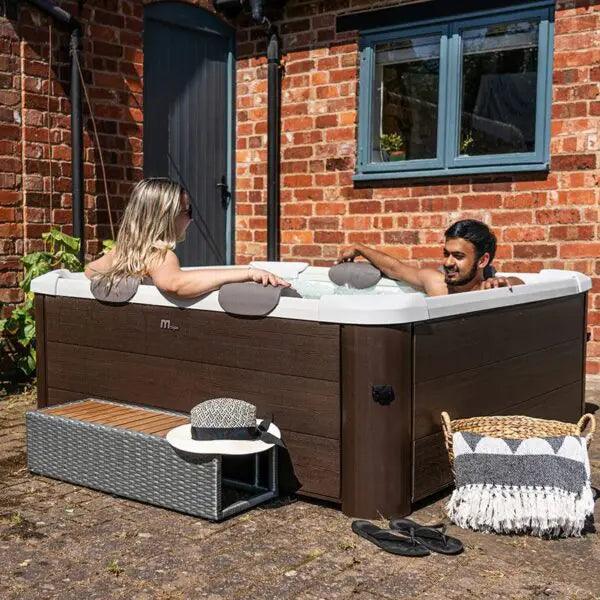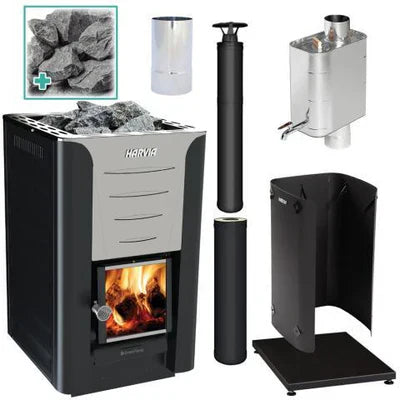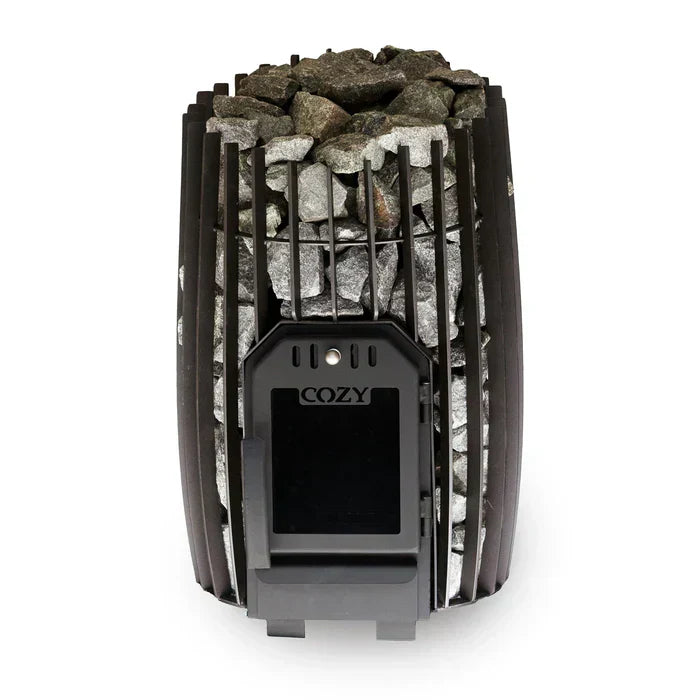If you own a wood burning sauna stove, you already know how important it is to maintain that warm, authentic sauna experience. Wood burning sauna stoves not only offer traditional, soothing heat but also create an atmosphere of natural relaxation that electric alternatives often can’t match.
At SplashBlaze™, we specialize in premium saunas, hot tubs, and fireplaces designed to enhance your living space with warmth and luxury. Our carefully curated selection of wood burning sauna heaters combines quality craftsmanship and reliable performance to deliver a lasting sauna experience.
Maintaining your wood burning sauna stove is key to preserving its efficiency, safety, and longevity. In this guide, we’ll walk you through essential maintenance tips that will help you keep your stove in peak condition for years to come.
Why Maintenance Matters for Your Wood Burning Sauna Stove
Wood burning sauna stoves are crafted to withstand high temperatures and daily use, but like any piece of equipment, they require regular care to operate safely and efficiently. Without proper maintenance, your stove can develop issues such as poor heat output, inefficient fuel consumption, smoke leakage, or even hazardous conditions.
According to the National Fire Protection Association (NFPA), failure to maintain wood-burning appliances properly contributes to more than 25,000 home fires annually in the U.S., underscoring the importance of routine care and inspection.
By performing routine upkeep, you can:
- Extend the lifespan of your stove
- Ensure optimal heating efficiency
- Prevent dangerous buildup of creosote and ash
- Reduce risk of chimney fires
- Save money on fuel and repairs
Top Maintenance Tips for Your Wood Burning Sauna Stove
Clean the Firebox Regularly
The firebox is where the wood burns, so it accumulates ash and debris after every use. Cleaning it regularly ensures better airflow and more efficient combustion.
- How often: After every few sauna sessions or at least weekly during heavy use
- Method: Wait for the stove to cool completely, then scoop out the ash using a metal ash shovel. Dispose of the ash safely in a metal container.
- Tip: Avoid letting ash buildup exceed 2-3 inches to maintain optimal airflow.
Inspect and Clean the Chimney and Flue
Creosote buildup inside your chimney and flue can lead to chimney fires and reduced stove performance. Creosote is a sticky, flammable substance created when wood smoke condenses on cooler surfaces.
- How often: At least once per sauna season, or more frequently if used heavily
- Method: Use a chimney brush to clean the flue, or hire a professional chimney sweep for thorough cleaning and inspection.
- Safety Note: Check that the chimney cap is intact and free from debris or bird nests.
Check the Stove Door Gaskets
The stove door gasket ensures a tight seal, preventing smoke leaks and maintaining heat efficiency. Over time, gaskets may degrade or become loose.
- How often: Inspect every 3-6 months
- Method: Look for cracks, wear, or gaps in the gasket. Replace the gasket if damaged; SplashBlaze™ offers replacement parts for various models.
- Pro Tip: When installing a new gasket, ensure it’s the correct size and firmly attached.
Examine the Glass Door (If Applicable)
Many wood burning sauna stoves have tempered glass doors for viewing the fire. Keeping the glass clean improves aesthetics and allows you to monitor the fire.
- How often: After every few uses or as needed
- Method: Use a specialized stove glass cleaner or a mixture of vinegar and water. Avoid abrasive materials that can scratch the glass.
- Warning: Clean only when the glass is cool to prevent cracking.
Monitor and Maintain Stove Paint or Finish
Heat from the stove can cause paint or surface finishes to deteriorate over time.
- How often: Inspect every sauna season
- Method: Touch up with heat-resistant stove paint as necessary, following manufacturer guidelines.
- Benefit: Maintains the stove’s appearance and protects against rust and corrosion.
Use Proper Wood Fuel
The type and quality of wood you burn directly affect stove performance and longevity.
- Recommended: Dry, seasoned hardwood such as oak, maple, or birch with less than 20% moisture content.
- Avoid: Wet, green wood or softwoods that produce excess creosote and smoke.
- Tip: Store wood in a dry, ventilated area for at least 6-12 months before burning.
Inspect the Air Vents and Controls
Air vents regulate the oxygen supply to the fire, influencing heat output and fuel consumption.
- How often: Check monthly during sauna use
- What to do: Ensure vents are free of debris or ash, and that controls move smoothly.
- Result: Proper airflow improves combustion efficiency and temperature control.
Schedule Annual Professional Inspections
While many maintenance tasks are DIY-friendly, an annual professional inspection adds an extra layer of safety and performance assurance.
- Service includes: Chimney sweep, stove inspection, gasket replacement advice, and safety check.
- Benefit: Identifies potential issues early, prevents hazards, and prolongs stove life.
Recommended Maintenance Schedule for Wood Burning Sauna Stoves
| Maintenance Task | Frequency | Notes |
|---|---|---|
| Firebox cleaning | Weekly / after use | Prevents ash buildup |
| Chimney & flue cleaning | Annually or biannually | Avoids creosote fires |
| Door gasket inspection | Every 3–6 months | Maintains airtight seal |
| Glass door cleaning | After several uses | Keeps viewing clear |
| Paint/finish inspection | Annually | Protects stove from rust |
| Air vent cleaning | Monthly | Ensures proper airflow |
| Professional inspection | Annually | Full safety and performance check |
Maintain Proper Ventilation in Sauna Room
Proper ventilation helps prevent moisture buildup that could damage your stove and sauna room.
- How: Ensure vents or windows allow fresh air circulation.
- Why: Moisture accelerates rust and can weaken wooden sauna components.
- Tip: Use a hygrometer to monitor humidity levels; ideal sauna humidity is 10-20%.
Avoid Overloading the Stove
Overloading the firebox with wood can cause overheating and damage.
- Rule of thumb: Follow manufacturer’s recommended wood load limits.
- Impact: Overheating may crack stove components or degrade seals.
Common Problems and Maintenance Solutions
| Problem | Cause | Maintenance Solution |
|---|---|---|
| Poor heat output | Ash buildup or clogged vents | Clean firebox and air vents |
| Smoke leakage | Damaged door gasket | Inspect and replace gasket |
| Creosote buildup | Burning wet or soft wood | Use seasoned hardwood; clean chimney |
| Glass door soot buildup | Incomplete combustion | Clean glass regularly |
| Stove surface rust | Moisture exposure | Touch-up with stove paint; improve ventilation |
The Benefits of Maintaining Your Wood Burning Sauna Stove
By following these maintenance tips, you not only keep your stove running efficiently but also enjoy:
- Improved Energy Efficiency: Well-maintained stoves burn wood more completely, reducing fuel consumption.
- Enhanced Safety: Reduced risk of chimney fires and smoke leaks protect your home and health.
- Longer Equipment Life: Routine care prevents premature wear and costly repairs.
- Better Sauna Experience: Consistent heat and fewer interruptions mean more relaxing sessions.
Conclusion
Proper maintenance is essential to keep your wood burning sauna stove in top shape. Regular cleaning, inspection, and using the right fuel will ensure your stove heats efficiently and safely while extending its lifespan. Remember to schedule professional inspections annually for added peace of mind.
If you’re ready to upgrade or maintain your sauna setup, visit SplashBlaze™ for a curated selection of premium sauna products and expert advice. Your perfect sauna experience starts with the right stove and proper care — and SplashBlaze™ is here to help every step of the way.
FAQs
It’s recommended to clean your chimney at least once per sauna season or twice if you use your sauna heavily. This prevents creosote buildup and reduces fire risk.
For best results, use dry, seasoned hardwoods like oak or maple with moisture content below 20%. Avoid green or softwoods to minimize smoke and creosote buildup.
If you notice smoke leaks, difficulty maintaining heat, or visible cracks and wear on the gasket, it’s time to replace it.
No, always allow the stove to cool completely before cleaning to avoid burns or damage.
A professional inspection ensures thorough cleaning, safety checks, and early detection of hidden problems that may not be obvious.

